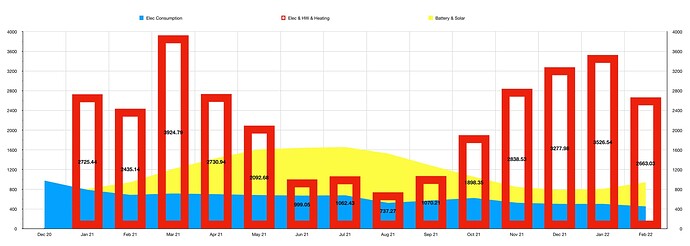I live in a city that is very cold in the winter (Winnipeg, Canada), we also have hot summers. It is not unusual to have a few nights of -40 degrees Celsius (many nights of -30) during the winter and a few days of +40 degrees Celsius (many days of +30) during the summer. Air to Air heat pumps are by far more common here than ground source. Many suites in new multi-residential buildings (apartments, condos) would have their own air to air heat pump on the balcony, its almost the default way they build them these days. In my neck of the woods all these systems would have electrical resistive backup for when temps drop below minus -25. The heat pump itself would have a COP of around 1.5 at -25, a COP of around 2 at -20, a COP of around 2.5 at -15, and then going up fairly rapidly after that.
Around 80% of existing homes in, and around, my city would have a gas-fired high efficient furnace, and an electrical powered central air-conditioning unit, comprised of the condensing coil and compressor housed in a unit outside the house and an evaporative a-coil on the ductwork directly above the furnace.
Our current rates for energy are: 10 cents per kilowatt/hour (all taxes in) for electricity, and 45 cents per cubic/meter (all taxes in) for natural gas (4.3 cents per kWh). Our electrical rates should stay fairly stable over the next decade or two, we have an abundance of Hydro power, so much so we sell a lot of it to the United States. Our natural gas rates will go up, due to both the rising price of natural gas on the commodity markets along with our government imposing ever increasing taxes on carbon based fuels.
Reliability of utilities. This is no comparison. Natural gas supply in Canada (not Texas) is the most reliable utility there is. For 90% of homes they can expect not to have any unscheduled service interruption over the course of 50+ years. Electrical reliability typically has a few outages a year that are short lived. Longer outages of a day or more are possible and do happen to most homes at least once in a 20 year span.
Considering all of the above, there seems to be two common paths for homeowners in my area seeking energy efficiency, reliability, and environmental stewardship when it comes to heating and cooling their homes:
Replace Central Air Unit with Air to Air Heat Pump combined with a small/portable natural gas fired gen set and/or a V2L emergency power option. This is a fairly inexpensive option that costs an extra $2500 - $4500 dollars when replacing the outside air conditioning unit. This option reduces the yearly natural gas consumption by 40% - 75% (all depends on the severity of the winter), you can expect to have a 15% - 25% savings on your yearly heating/cooling costs. This option still results in greenhouse gas emission as you are still using significant amounts of natural gas. These savings increase as the price of natural gas goes up and the price of electricity remains stable. This option is very easy to make reliable in case of a power outage. Simply have a small gen set (like a 2000 watt Honda) run on natural gas to power your furnace, sump pump, fridge/freezer, etc... In this emergency mode you still have gas fired heat, but don't have the electrical supply to run cooling in the summer. These days some people are just using the V2L feature of their electric car to accomplish the same thing.
Replace Central Air Unit and Furnace with a Ground Source Heat Pump. This will cost you $30 000.00 dollars or more and is most often seen in new builds, rarely as an upgrade to an existing home. This option entirely eliminates the need for natural gas for heating of the home. Often, but not always, these homes have no natural gas supply at all. You can expect to have a 45%-55% savings on your yearly heating and cooling costs. These savings will increase as the cost of natural gas increases while the cost of electricity remains stable. It is more difficult to make this system reliable in the situation of an electrical outage. You typically don't have a small (or large) natural gas fired generator, and the V2L power options of many electrical vehicles would not supply the power required to run the heating/cooling system. Some new electric vehicles (like the F-150) would have no problem doing this, but it is not every electric vehicle. This option gets top marks for environmental stewardship as it allows the home to be a zero emitter of greenhouse gas.
Note my energy saving percentages listed above (15%-25% and 45%-55%) are directly correlated to my local price of both electricity (10 cents per kWh) and natural gas (4.3 cents per kWh). These percentages would be substantially different in a location where these rates are substantially different.
Probably, the number one reason why very few homeowners in my area are willing to ditch a gas-fired furnace is for the reliability during a severe weather event. At -40 degrees it is critical to keep your home heated, regardless of insulation level it will cool off fast at these temps. Natural gas supply is incredibly reliable, a modern high efficient gas furnace needs about 400 watts to run, an electrical requirement that is easily meet by an alternative when the electrical grid goes down.



